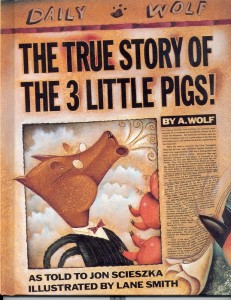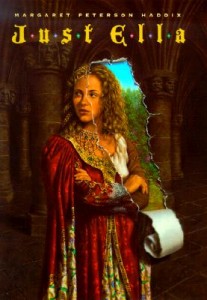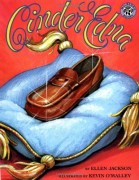What is a Retelling?
To first understand what the genre of “Retelling Fairy Tales” is about, one must define what a fairy tale is. According to the Merriam-Webster dictionary, a loose definition of a fairy tale is a story involving fantastic forces and beings such as fairies, wizards, and goblins. Fairy tales can be found all around the world and span several cultures. Many people have been exposed to fairy tales since childhood with such Disney movies as Beauty and the Beast, Cinderella, and The Little Mermaid.
Retelling fairy tales is a relatively new genre. While many cultures have similar themes in their fairy tales, they are all different. Retelling a fairy tale is about taking that fairy tale and putting a different spin on it. Oftentimes, retellings keep the bare bones of the original tale, but redress it in something different. Usually this means that main plot points are there, but everything else about it is different. The important part of a retelling is that it deviates from the original tale but one could still identify the fairy tale that is being retold.
“Fractured Fairy Tales” is an important sub-genre of Retelling Fairy Tales. In a fractured fairy tale the same story is seen through a different character’s eyes or is a continuation of the same tale. Just Ella, by Margaret Peterson Haddix, is a novel about what happened after Cinderella (who goes by Ella) finds her Prince Charming. While most versions of the Cinderella tale end when he slips on that slipper and they lived happily ever after, this novel tells the tale of Ella’s adventure into self-discovery and ultimately happiness. This is slightly different than a retelling because this is a continuation of the original tale but goes beyond the happily ever after into what happened after Cinderella was discovered. Another good example of a fractured fairy tale is The True Story of the Three Little Pigs by Jon Scieszka, which is told from the Wolf’s perspective. This tale shows the wolf in a different light, where he has a cold and is in the wrong place at the wrong time. These two elements, the continuation of the original tale and a different character’s perspective, is essential to a fractured fairy tale.
What do Retellings do differently?
The main difference that you will find in a retelling is different plot points. This means that you can still identify the original tale but there are some significant changes to its plot. This can be seen in The Three Little Wolves and the Big Bad Pig by Eugene Trivizas where the wolves build their houses and the pig keeps knocking them down. The original tale and the retold one are similar except the roles of the pig and the wolf are reversed. The same elements of the original tale are there but the tale is tweaked and that makes it different but no less entertaining.
Sometimes the plot is the same but the characters are different. This is seen in Kate and the Beanstalk by Mary Pope Osborne, which is a retelling of Jack and the Beanstalk except that that Jack has been replaced by Kate. In the story it is Kate who is clever enough to fool the Giants. Many authors do the same thing. In an article by Hilary S. Crew on the prominent young adult novelist Donna Jo Napoli, a popular author in the retellings of fairytales genre, states that “in her revisions of fairy tales, Napoli does, indeed, redefine fairy tale protagonists, creating complex fully realized characters with whom readers may relate to more closely than to their counterparts in traditional tales.” Napoli doesn’t stop at redesigning the female protagonists in her novels. Crew declares that the princes in Napoli’s stories “possess qualities that challenge Western patriarchal stereotypes of masculinity” because they are “represented as loving and compassionate; they demonstrate through their actions and their discourse a commitment to family and loving relationships.”
The message of the original story may also be changed. Many fairy tales have the quintessential “damsel in distress”; the woman who is stuck in some situation and can’t get out of it without a dashing prince to save her. What some authors of the genre do is put a feminist spin on a story that otherwise conforms to patriarchal ideals of women. In Cinder Edna by Ellen Jackson, the plain but hardworking neighbor of Cinderella works diligently and doesn’t rely on someone else helping her out of her situation. She doesn’t have a fairy godmother but she is determined to go to that ball anyways. In the article “Fairy-tale Retellings between Art and Pedagogy” by Vanessa Joosen, she states that “fairy-tale retellings try to make children and adolescents who make the connection with the original tale aware of issues and possible interpretations in these texts which they had not noticed before.” This allows for the child to see things in a different way and come to new conclusions on their favorite tales.
Click here for the link to Hilary S. Crew’s article.
Click here for Vanessa Joosen’s article “Fairy-tale Retellings between Art and Pedagogy”





